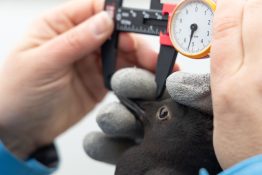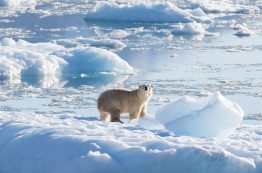When we think of wildlife ecologists, we might envision researchers traipsing through meadows, fording rivers, and tracking elusive predators on daring field expeditions. While some of these images may be accurate, those who work in quantitative ecology and conservation know that some of the most groundbreaking and essential ecological research takes place behind the computer screen, using statistics, mapping, and mathematical models.
Read more »‘Safety in numbers’ tactic keeps Pacific salmon safe from predators
Animals that live in groups tend to be more protected from predators. That idea might be common sense, but it’s difficult to test for some species, especially for wild populations of fish that live in the ocean. A new University of Washington study that leverages historical data has found unique support for the “safety in numbers” hypothesis by showing that Pacific salmon in larger groups have lower risk of being eaten by predators.
Read more at UW News »Newly documented population of polar bears in Southeast Greenland sheds light on the species’ future in a warming Arctic
Scientists have documented a previously unknown subpopulation of polar bears living in Southeast Greenland. The polar bears survive with limited access to sea ice by hunting from freshwater ice that pours into the ocean from Greenland’s glaciers. Because this isolated population is genetically distinct and uniquely adapted to its environment, studying it could shed light on the future of the species in a warming Arctic.
Read more at UW News »College faculty, staff and students honored at the 2022 Awards of Excellence
Each year, the University of Washington’s Awards of Excellence highlight alumni, faculty, staff, retirees and students who contribute to the richness and diversity of the University community. This year, the University has recognized the outstanding contributions of four members of the College of the Environment: Mikelle Nuwer, Kristin Privitera-Johnson, Burlyn Birkemeier and Joanna Long. The winners will be honored from 3:30 to 5:30 p.m.
Read more »Model finds COVID-19 deaths among elderly may be due to genetic limit on cell division
Your immune system’s ability to combat COVID-19, like any infection, largely depends on its ability to replicate the immune cells effective at destroying the SARS-CoV-2 virus that causes the disease. These cloned immune cells cannot be infinitely created, and a key hypothesis of a new University of Washington study is that the body’s ability to create these cloned cells falls off significantly in old age.
Read more at UW News »





